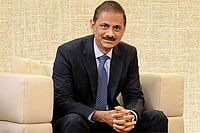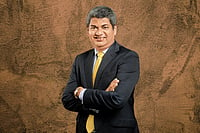How do you see the markets behaving during 2024 elections?
Generally, in the run-up to the elections, the policies are such that multiplier effects come into the economy as you find that the government spending is quite robust. All that leads to consumption, which tends to be on the higher side. But we are coming on the back of a slightly inflationary environment, so the consumption pattern this time around is slightly different from what we have seen in the past. We are seeing a K-shaped recovery on demand.
Typically, it is the fast-moving consumer goods (FMCG) which gets impacted positively. This time, the auto sector is getting positively impacted. FMCG is still flat. The other thing is that rural India also tends to showcase the consumption story. Going forward, I think two-wheelers, rural consumption and auto consumption are expected to show growth.
Are there other big sectors to watch out for?
One of the segments that we are quite excited about is the entire energy transition to clean energy space and renewables. Data sciences, data centres, APIs, that is another very interesting area that is expected to see growth. Then, some of the PLI (production-linked incentive) efforts are leading to growth in the electronics manufacturing sector. And let us not forget the spend the government is doing towards modernising railways and defence sectors.
Then there is telecom. Given the kind of consumption the young Indians are doing all the time on their mobile phones, I think that is an area of continued growth. Power is one area where there has been a little bit of confusion, but as economic momentum and growth is taking place, it is becoming clear that apart from renewables, the traditional areas of power are also good. I think they can co-exist, and places which have underperformed for a long period in the past are beginning to see traction, and we expect that traction to continue. Finally, let us not forget banking. That is an area which has got a lot of prospects for growth.
Could you tell us a bit more about the banking sector?
Currently, almost every bank is sitting on a clean balance sheet with strong capital position. That has been reflected in the medium-term rise in the market valuations of most of the large banks and others.
Right now, there are four important drivers. The first is the new-to-credit segment. The banking business can expand into this segment as the economy expands, and it will continue to provide a great amount of bottom-of-the-pyramid momentum. The second is the trend of growing affluence, leading to big opportunities in the wealth management and private banking space. The third opportunity for growth is the mid- and small-cap segment, the SME and MSME spaces. This segment is always looking for growth capital and can provide good momentum. Fourth is digitisation. The banking sector is a big beneficiary as it has been among the leaders in terms of using and embracing technology.
The banking system has still got great potential. We remain very optimistic about its medium-term story.
The year 2023 was marked by a rally in mid- and small-cap stocks. Was that supported by fundamentals? What is the way forward?
Small- and mid-caps have seen a great run in the last nine months to a year. Though there are questions being raised about whether that is justified, if you really dissect it, you will find that it is largely earnings-related, so it is fundamentally driven. The earnings have come because of margin improvement and that has happened because capacity utilisation is going up. We have also seen that most of the companies have got much better balance sheets and debt levels are low. Overall, it is on the back of improved profit profile.
But what does it mean? In the immediate term, one needs to understand that with a significant rally in a short period of time, there is always the risk of a pullback or volatility. Typically, mid-caps and small-caps are a lot more volatile than the larger-cap companies. So, if there is a pullback due to any factor, either domestic or global, it will probably be sharper. One needs to be cognizant of that. But given the medium-term prospects of India as a growth story, it is inevitable that these categories will benefit.
What are the trends that investors should watch out for in the New Year?
The biggest thing people should watch out for is mistaking investing for trading. In fact, a recent report from the Securities and Exchange Board of India said that 90% of the people who are trading in futures and options are ending up losing money. One should think of trading more as a tactical move. Create your core portfolio in a more long-term asset allocation framework model and think of trading as something which is satellite to your own portfolio because there will be tactical opportunities.
The younger population seldom thinks about goals, especially long-term ones like retirement. What is your advice to them?
The retirement goal is a subject close to my heart. The concept is never talked about the way it should be talked about, probably because of reasons such as it seems too far out into the future. But one needs to realise that it is going to happen at some stage and one needs to plan for it. Longevity is improving in India and the money you put aside during your active working years is what will support you. I believe there is a big gap in understanding, appreciating and planning for retirement.
Also, I think the market may not have appropriate instruments for this goal. Therefore, one needs to think about investment on their own at a reasonably early age, ideally, 35 to 40 years.
























